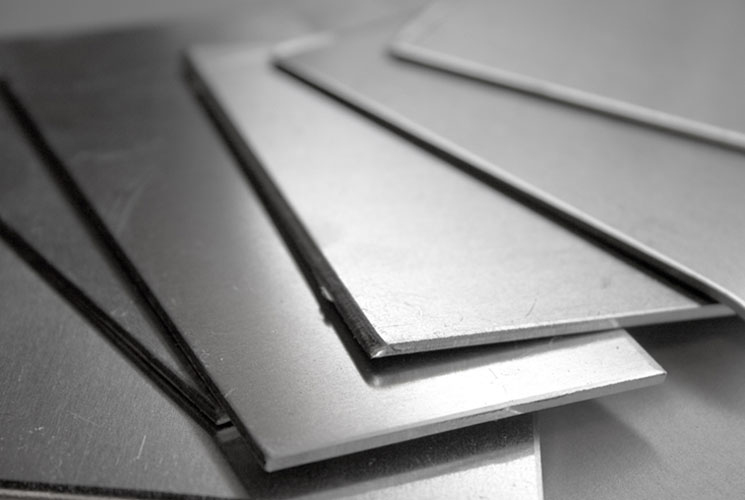Aluminium
Contents |
[edit] Introduction
Aluminium makes up more than 8% of the Earth’s core mass and is the most widespread metal. It is also the third most common chemical element after oxygen and silicon. It is the 13 element on the Periodic Table and has a silvery-white appearance.
Pure aluminium does not occur in nature because it binds very easily with other elements. It is because of this that aluminium was only discovered in the 19th century when scientists were able to break down chemical compounds into their elements.
Because of the high costs of the extraction process, it wasn't until the late 19th century that it was possible to produce aluminium on an industrial scale for use in construction and other industries.
[edit] Extraction process
Aluminium is relatively expensive because of the amount of energy required for its extraction. It is extracted from aluminium oxide, a white powder which is purified from aluminium ore (bauxite).
The aluminium oxide is dissolved in molten cryolite (an aluminium compound that has a lower melting point than aluminium itself). Aluminium is then extracted by a process of electrolysis or electrolytic reduction. Electricity is passed through the liquid, and aluminium forms at the negative electrode. It then sinks to the bottom of the tank, where it can be tapped off.
[edit] Properties of aluminium
One of the main reasons for aluminium’s widespread application is its combination of properties:
- Lightweight: Almost three times lighter than iron.
- Durable: Almost as durable as steel.
- Ductile: Extremely flexible and easily processed using pressure when hot or cold.
- Corrosion-resistant: Its surface is protected by an extremely thin yet very strong layer of aluminium oxide.
- Non-magnetic.
- Excellent conductivity.
- Fire-resistant.
- Non-toxic.
- Bonds with other elements relatively easily, enabling the formation of a wide variety of aluminium alloys.
- Re-usable: Aluminium and its alloys can be melted down and reused without any impact on their mechanical properties. Estimates suggest that around 75% of all aluminium produced is still in use in some form.
[edit] Aluminium in construction
As the extraction process is relatively expensive, aluminium was generally not used in construction until the early-20th century. In the 1920s, it began to be used primarily for decorative detailing and Art Deco structures. In the 1930s, a breakthrough was achieved when the Empire State Building used aluminium for much of its interior structures and its famous spire. Subsequently, it began to be used for roofing, flashing, wall panels, spandrels, and so on.
Today, aluminium is the second most used metal in buildings after steel.
Because of its ductility, aluminium can be formed into many shapes and profiles. Aluminium wall cladding systems are commonly used for building exteriors, with large wall panels requiring fewer joints, resulting in time-efficient installation.
Some of the most common applications for aluminium are:
- Window and door frames.
- Rolling shutters and sun shading elements.
- Long-span roof systems covering large areas such as halls and auditoriums.
- Structures located in inaccessible places where the economy of transport and ease of installation are important, such as electrical transmission towers.
- Structures in corrosive or humid environments, such as swimming pools, bridges, hydraulic structures, offshore superstructures, and so on.
- Structures with moving sections, such as moving bridges.
- Structures to which access for maintenance is limited, such as masts, lighting towers, antenna towers, and so on.
[edit] Related articles on Designing Buildings
- Alloy.
- Aluminium decking.
- Bauxite.
- Cast iron.
- Copper.
- Failure of metals.
- Flashing.
- Galvanised steel.
- Iron.
- Lead.
- Metal.
- Metal fabrication.
- Metal roofing.
- Stainless steel.
- Types of metal.
- Zinc.
[edit] External resources
- Aluminium Leader - What is aluminium?
Featured articles and news
Grenfell Tower fire – eight years on
A time to pause and reflect as Dubai tower block fire reported just before anniversary.
Airtightness Topic Guide BSRIA TG 27/2025
Explaining the basics of airtightness, what it is, why it's important, when it's required and how it's carried out.
Construction contract awards hit lowest point of 2025
Plummeting for second consecutive month, intensifying concerns for housing and infrastructure goals.
Understanding Mental Health in the Built Environment 2025
Examining the state of mental health in construction, shedding light on levels of stress, anxiety and depression.
The benefits of engaging with insulation manufacturers
When considering ground floor constructions.
Lighting Industry endorses Blueprint for Electrification
The Lighting Industry Association fully supports the ECA Blueprint as a timely, urgent call to action.
BSRIA Sentinel Clerk of Works Training Case Study
Strengthening expertise to enhance service delivery with integrated cutting-edge industry knowledge.
Impact report from the Supply Chain Sustainability School
Free sustainability skills, training and support delivered to thousands of UK companies to help cut carbon.
The Building Safety Forum at the Installershow 2025
With speakers confirmed for 24 June as part of Building Safety Week.
The UK’s largest air pollution campaign.
Future Homes Standard, now includes solar, but what else?
Will the new standard, due to in the Autumn, go far enough in terms of performance ?
BSRIA Briefing: Cleaner Air, Better tomorrow
A look back at issues relating to inside and outside air quality, discussed during the BSRIA briefing in 2023.
Restoring Abbotsford's hothouse
Bringing the writer Walter Scott's garden to life.
Reflections on the spending review with CIAT.
Retired firefighter cycles world to raise Grenfell funds
Leaving on 14 June 2025 Stephen will raise money for youth and schools through the Grenfell Foundation.
Key points for construction at a glance with industry reactions.
Functionality, visibility and sustainability
The simpler approach to specification.
























Comments